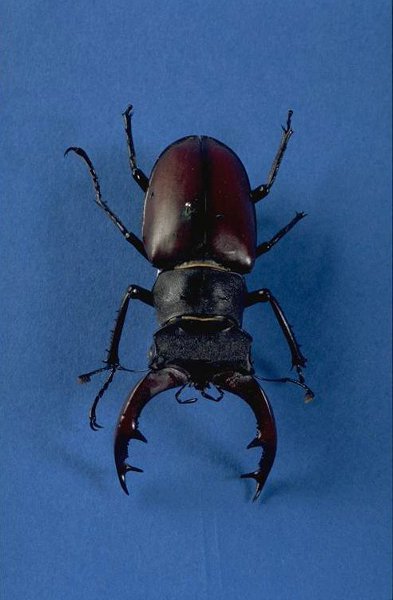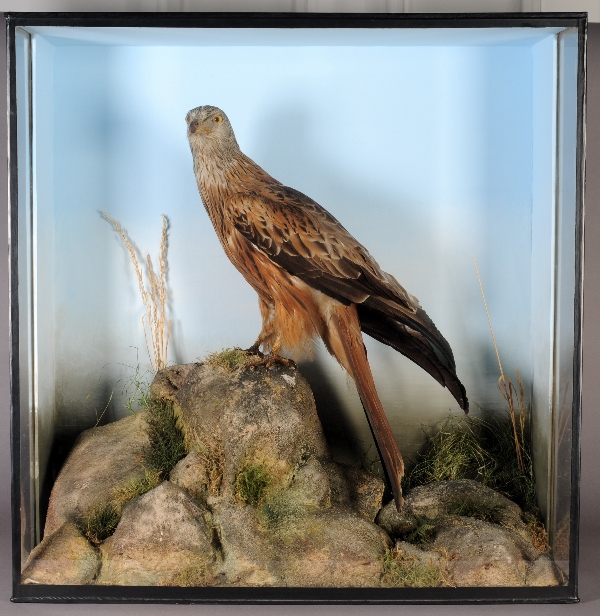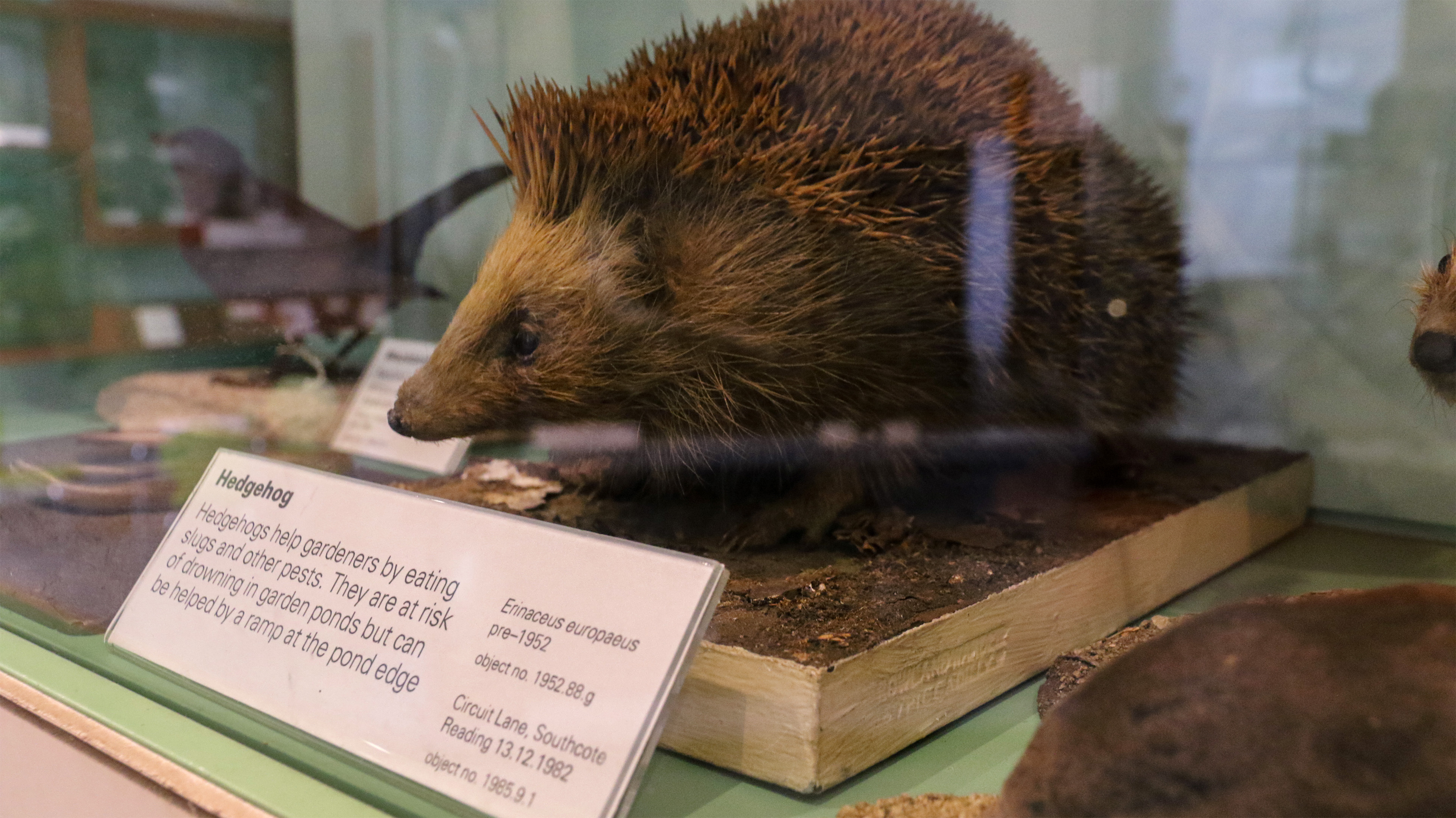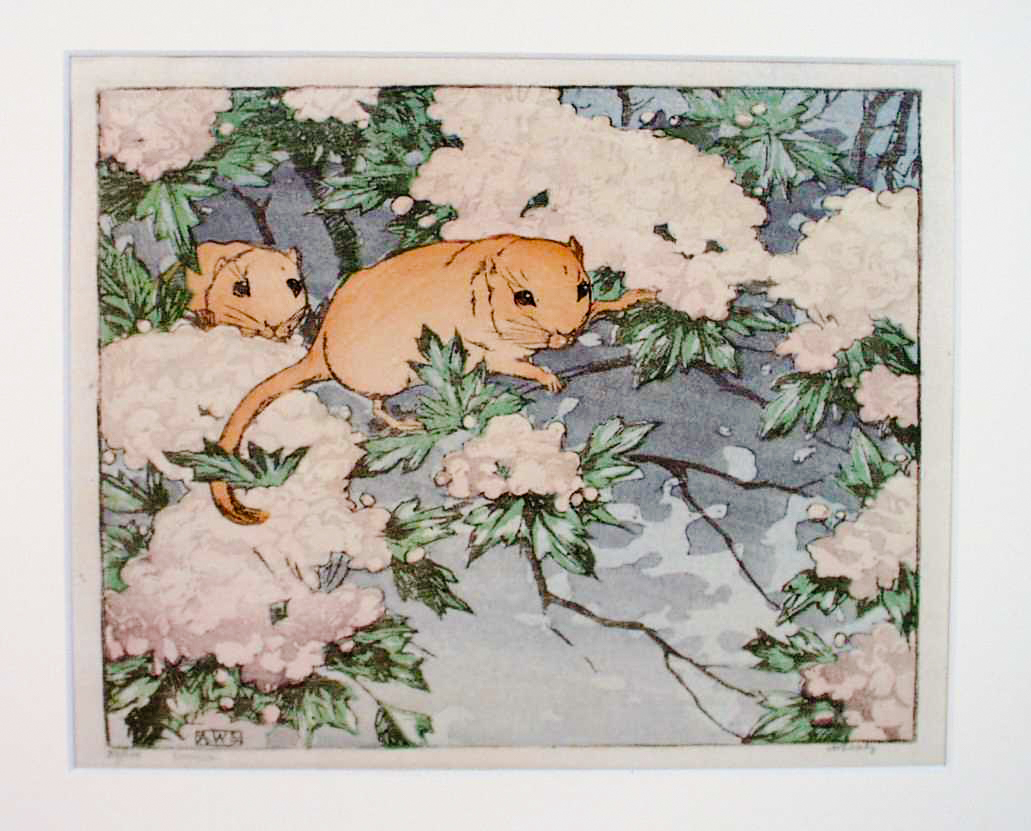Winter is a tough time for a lot of animals, especially plant-eaters or those that eat insects and other invertebrates (such as slugs and snails). Plant growth slows in winter as day length shortens and temperatures fall, while the colder weather means that invertebrates are less active. Most seem to disappear altogether as they enter a period of dormancy.
In this blog, part of Our Green Stories, learn about how animals survive the cold winter months, with examples from our collections.
Invertebrates
Many invertebrates hide in cracks and crevices until temperatures begin to rise. You might have seen large gatherings of ladybirds wedged into window frames, or butterflies sitting motionless in a corner, perhaps in a shed or a colder room of the house. Other species overwinter as eggs or pupae, some underground, some among leaf litter or in dead plant stems. These animals are all waiting out the cold, dark winter in a kind of suspended animation called ‘diapause’. They use very little energy in this state, but in spring when warmth and light brings new plant growth, those that survive time their emergence to take advantage of the fresh shoots and nectar.

The stag beetle (Lucanus cervus) is the largest and most spectacular of British beetles. Their size is very variable - this male is 60mm long but the smallest females tend to be nearer 30mm. (REDMG : 1998.186.4)
Birds
Birds can hunt for hidden insects of course, but many change their diet during the winter months, eating more seeds. Some fly south for the winter, leaving Britain for southern Europe or Africa, while others come here from Scandinavia. Sometimes these migratory birds are species we think of as resident – for example, the robins in your garden at Christmas aren’t necessarily all the same ones that nested there in the summer! Even the most territorial birds are less aggressive during winter as their priorities change from breeding to survival. The RSPB has more information on bird migration on their website.
People used to think that birds like the swallow spent the winter in mud at the bottom of lakes and that’s not as odd as it sounds, as there are animals that do just that. Frogs and newts often hibernate at the bottom of a pond - while they are dormant their oxygen needs are so low they can be met by absorption through their skin! Toads more commonly bury themselves in damp earth or compost heaps, which stops them losing too much moisture. Learn more about amphibians in the winter.

The red kite is a bird of prey which is now a common sight in Reading, thanks to a successful re-introduction programme in the Chiltern Hills between 1989 and 1994. (REDMG : 1957.157.34)
Mammals
Hibernating mammals build up fat reserves in the autumn to ensure they have enough ‘in the tank’ to see them through to spring. In mild winters they stay active into November, and some do wake up and even move to a new site during the hibernation period. However, mammals normally spend a lot of energy maintaining their body temperature. Mild winters can prevent them reaching the low temperatures they need to save energy, and cause them to wake more often or too early. Becoming active when there’s not much food around burns through their reserves. So climate change making average winters warmer will significantly affect their chances of survival.
If you see a hedgehog awake in winter it’s not necessarily in trouble unless it’s too small. But any hedgehogs in your garden will appreciate some extra food during the colder weather – tinned cat food is a suitable substitute for slugs and worms! Go to the Hedgehog Street website for more tips on how to support garden hedgehogs, and if you see one you think might be in need of more help, try St Tiggy Winkles, which also has a series of great wildlife factsheets.

The hedgehog was mounted by the famous taxidermy firm Rowland Ward of London, who were specialists in big game trophies. (REDMG : 1952.88.g.1)
All British bats are insect-eaters and the commonest species you’ll notice around dusk in the summer are the pipistrelles, though brown long-eared bats and Daubenton’s bats (found near water) can also be seen in Reading. They hibernate in cool, quiet places, either on their own or in small groups. They will use caves, tree hollows, eaves or roof spaces. Pipistrelles are the smallest, needing only a 13mm gap to squeeze in. They fit under lifting bark and tiles! You should not disturb them as they are protected in the UK under the Wildlife and Countryside Act, 1981. If you want to find out more or get advice check out the Berks and South Bucks Bat Group.

Pipistrelles are the smallest bats in the UK. There are three species which are distinguished by the ultrasonic calls they make in flight - the echolocation they use to navigate in darkness (although they are not blind). (REDMG : 2003.113.1)
Dormice live in coppice woodland, scrub and old hedges with lots of plant diversity. They eat pollen and nectar from flowers as well as caterpillars that live on tree leaves in spring, and fatten up on fruits and nuts in the autumn. They are arboreal, which means they spend their lives up in the branches of trees and shrubs, climbing and jumping like miniature squirrels, but they hibernate in tightly-woven nests usually in coppice stools, among exposed tree roots or just underground.
Like most animals their activities are timed to coincide with availability of resources, often in response to temperature and day length as much as the resource itself. Climate change means that these things are increasingly out of sync, and this will have unpredictable effects on many species from the emerging queen bumblebee to the nesting bluetit and returning swallow, adding to the habitat pressures they already face. Find out more about supporting wildlife globally and locally.

Dormice by Allen William Seaby. Coloured woodcut.

For more tips on how to support garden hedgehogs go to the Hedgehog Street.
Find out more about supporting wildlife globally through the People's Trust for Endangered Species and locally with the Berks, Bucks and Oxon Wildlife Trust.





